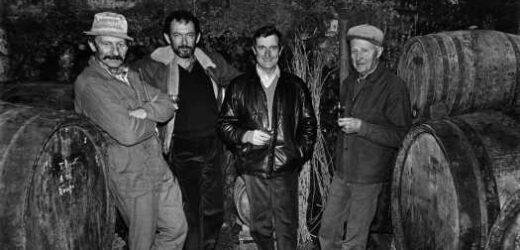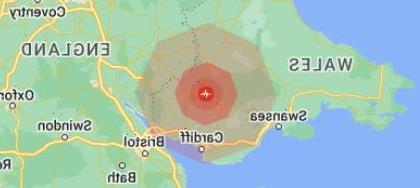Raymond Trollat, a storied grape grower and winemaker who embodied the spirit and history of France’s Northern Rhône Valley and its protected area known as the St.-Joseph appellation, died on Sunday in Lyon, France. He was 91.
His death, in a hospital, was confirmed by Jean Gonon, a friend and a fellow grower and producer in St.-Joseph.
Mr. Trollat came from a long line of vignerons, people who both grew grapes and made them into wine. His career spanned the Northern Rhône’s evolution from a rural backwater of France to a world-renowned wine region with globe-trotting winemakers.
When, in the 1940s, Mr. Trollat joined his father in their vineyards high in the schist-and-granite hills above the town of St.-Jean-de-Muzols, the Northern Rhône was considered a hinterland, with wines that were rustic and inconsequential, except for Hermitage, one of France’s most famous appellations in the 18th and 19th centuries.
The mid-20th century was a difficult time for the Northern Rhône Valley. After two world wars and the Great Depression, few vignerons had the stomach for the arduous task of farming the steep hillside vineyards. Some slopes were so precipitous, they were considered unsafe for horses, to say nothing of tractors. Instead, growers used a system in which a plow was guided up a hill by a cable attached to a winch powered by a human.
Many younger people left for work in the cities. As farming became automated, others abandoned the hillsides for flatter land, which was not as conducive to good wine but easier to farm. A dedicated few stayed on, like Marius Gentaz in Côte-Rôtie, Noël Verset and Auguste Clape in Cornas, and Mr. Trollat in St.-Joseph, maintaining the regional traditions for little reward.
In the 1950s and ’60s, the local wine was held in such low regard that farmers could earn more growing apricots and cherries than they could with wine grapes. Very few vignerons even bottled their own wines, selling instead to négociants, or wine merchants, who blended it with other wines and sold it under their own names.
When Mr. Trollat began working with his father, he recalled in a 2013 interview, they sold their wine by the barrel to local bars and bistros. Paying only pennies, the coal miners in St.-Étienne nearby would fill up jugs and take them to drink at work. Others in the area bought barrels to consume at home, drinking some of the wine each day, and as the barrels slowly emptied, the wine inside would become oxidized and volatile, but so slowly that nobody noticed.
“It was basically vinegar — we didn’t have to change bottles for the salad,” Mr. Trollat said.
Yet, he kept at it, and shortly after the St.-Joseph appellation was established in 1956, Mr. Gonon said, Mr. Trollat and his father were among the first to begin bottling their wines, sensing an opportunity to sell beyond their neighbors. They were also among the first to explore markets outside the local region.
“He was traditional, but with an open-mindedness that few winegrowers in the region had at the time,” Mr. Gonon said of Mr. Trollat by email. “He worked without dogma, but with a lot of pragmatism and a bit of empiricism.”
Mr. Trollat made wine in the tiny stone cellar under his home, where ancient barrels were stacked on a dirt floor under arched walls caked in mold, as are many old European cellars that have been the sources of great wine.
Kermit Lynch, a leading American wine importer, was introduced to Mr. Trollat in the 1970s by Gérard Chave, a top Hermitage producer who knew St.-Joseph well. He was taken with both the wines and the man.
“What stood out about Raymond was his totally funky approach to winemaking, his faith in his terroir and his lack of ego,” Mr. Lynch recalled in an email. “Wine creates a lot of what the French call grosses têtes” — or big heads — “but Raymond had too great a sense of humor.”
By the time Mr. Trollat retired in 2005, wine lovers from all over the world were making pilgrimages to his humble farm at the top of a hill, where he was always willing to open an old bottle or two and share stories with them.
Visitors would taste his reds, made of the syrah grape, and his whites, made of marsanne and chasselas, a grape that was planted by his grandfather before the St.-Joseph appellation was created.
Matthew Conway, proprietor of the Tippling House wine bar in Charleston, S.C., and a Rhône lover, visited Mr. Trollat often.
“He was intertwined in Rhône culture,” he said by phone. “I looked at him as living history, somebody who had a profound impact on their land and art.”
In the years after Mr. Trollat retired, bottles of his St.-Joseph would sell for hundreds of dollars at auction, prices he considered absurd for what was essentially a soulful village wine.
“My wines were worth no more than five euros,” he often said.
Raymond Trollat was born on April 7, 1931, in the family home in St.-Jean-de-Muzols. His father, Ernest, came from a long line of vignerons. His mother, who helped the vignerons, died when Raymond and his sister, Jeannine, were very young.
Mr. Trollat left school at 14 to work with his father and for the rest of his life rarely strayed far from his home.
“He’d wake up early, farm before it got hot, have a small lunch and then see people in the cellar,” Mr. Conway said. “People brought life to him on the hill. He didn’t leave the house for months at a time.”
Mr. Trollat was unmarried for much of his life. Then, in 1994, he met Ginette Maron, who moved into his house and began working with him; they married in 2000. She survives him.
As Mr. Trollat got older, he sold parts of his vineyard, some to Mr. Gonon and Mr. Gonon’s brother, Pierre, whose wines, labeled with their father’s name, Pierre Gonon, are prized around the world. Even after his last vintage, 2005, though, Mr. Trollat kept a small part for himself to make wine for his family and friends.
“He took the word simplicity and gave it character,” John Livingstone-Learmonth, author of “The Wines of the Northern Rhône” (2005), said in an email. “He was one of the last remaining growers whose wines delved into the simple pleasures of an age of innocence.”
Source: Read Full Article


